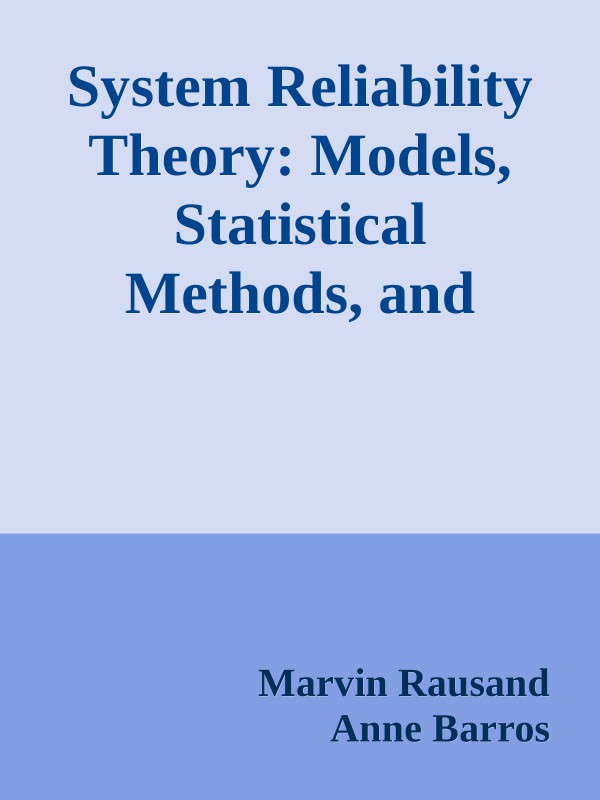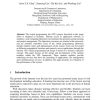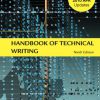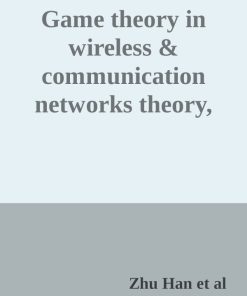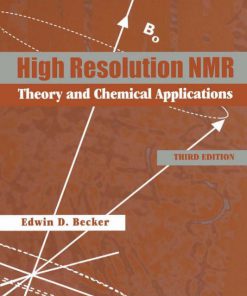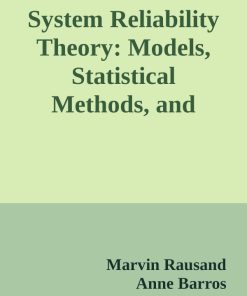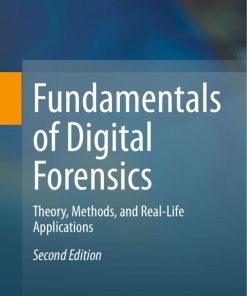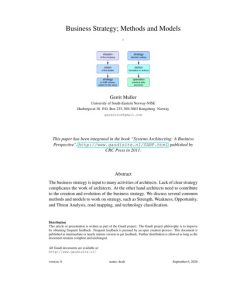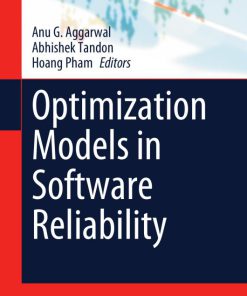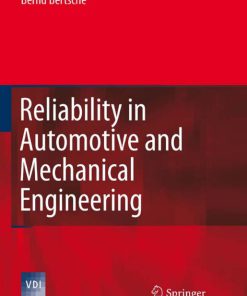System Reliability Theory Models Statistical Methods and Applications 3rd edition by Marvin Rausand, Anne Barros, Arnljot Hoyland 9781119373957 1119373956
$50.00 Original price was: $50.00.$25.00Current price is: $25.00.
Authors:Marvin Rausand; Anne Barros; Arnljot Hoyland , Series:Mathematics [25] , Tags:Technology & Engineering; Quality Control; Mathematics; Probability & Statistics; Stochastic Processes , Author sort:Rausand, Marvin & Barros, Anne & Hoyland, Arnljot , Ids:9781119373520 , Languages:Languages:eng , Published:Published:Nov 2021 , Publisher:John Wiley & Sons , Comments:Comments:Handbook and reference for industrial statisticians and system reliability engineers System Reliability Theory: Models, Statistical Methods, and Applications, Third Edition presents an updated and revised look at system reliability theory, modeling, and analytical methods. The new edition is based on feedback to the second edition from numerous students, professors, researchers, and industries around the world. New sections and chapters are added together with new real-world industry examples, and standards and problems are revised and updated. System Reliability Theory covers a broad and deep array of system reliability topics, including: · In depth discussion of failures and failure modes · The main system reliability assessment methods · Common-cause failure modeling · Deterioration modeling · Maintenance modeling and assessment using Python code · Bayesian probability and methods · Life data analysis using R Perfect for undergraduate and graduate students taking courses in reliability engineering, this book also serves as a reference and resource for practicing statisticians and engineers. Throughout, the book has a practical focus, incorporating industry feedback and real-world industry problems and examples.
System Reliability Theory Models Statistical Methods and Applications 3rd edition by Marvin Rausand, Anne Barros, Arnljot Hoyland – Ebook PDF Instant Download/Delivery. 9781119373957, 1119373956
Full download System Reliability Theory Models Statistical Methods and Applications 3rd edition after payment
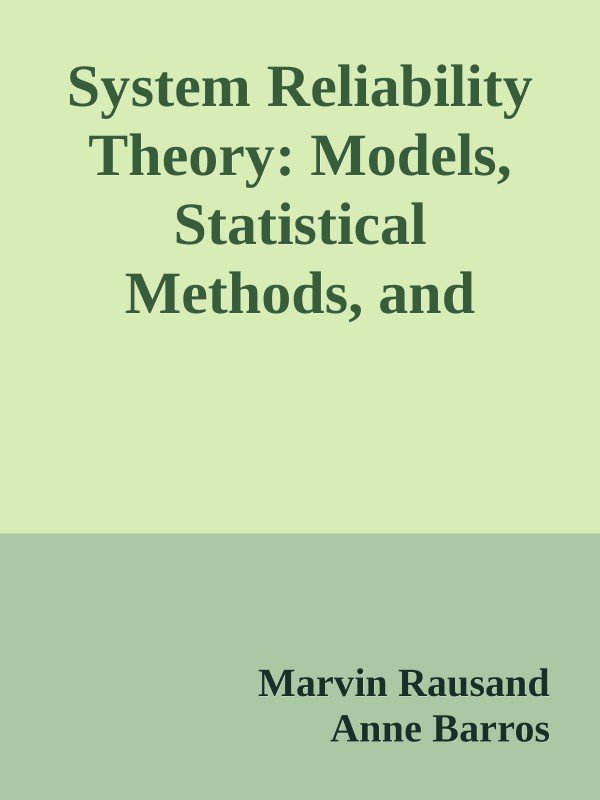
Product details:
ISBN 10: 1119373956
ISBN 13: 9781119373957
Author: Marvin Rausand, Anne Barros, Arnljot Hoyland
Handbook and reference for industrial statisticians and system reliability engineers
System Reliability Theory: Models, Statistical Methods, and Applications, Third Edition presents an updated and revised look at system reliability theory, modeling, and analytical methods. The new edition is based on feedback to the second edition from numerous students, professors, researchers, and industries around the world. New sections and chapters are added together with new real-world industry examples, and standards and problems are revised and updated.
System Reliability Theory covers a broad and deep array of system reliability topics, including:
· In depth discussion of failures and failure modes
· The main system reliability assessment methods
· Common-cause failure modeling
· Deterioration modeling
· Maintenance modeling and assessment using Python code
· Bayesian probability and methods
· Life data analysis using R
Perfect for undergraduate and graduate students taking courses in reliability engineering, this book also serves as a reference and resource for practicing statisticians and engineers.
Throughout, the book has a practical focus, incorporating industry feedback and real-world industry problems and examples.
System Reliability Theory Models Statistical Methods and Applications 3rd Table of contents:
Chapter 1: Introduction
1.1 What is Reliability?
1.2 The Importance of Reliability
1.3 Basic Reliability Concepts
1.4 Reliability Metrics
1.5 Approaches to Reliability Analysis
1.6 Reliability Engineering
1.7 Objectives, Scope, and Delimitations of the Book
1.8 Trends and Challenges
1.9 Standards and Guidelines
1.10 History of System Reliability
1.11 Problems
References
Chapter 2: The Study Object and its Functions
2.1 Introduction
2.2 System and System Elements
2.3 Boundary Conditions
2.4 Operating Context
2.5 Functions and Performance Requirements
2.6 System Analysis
2.7 Simple, Complicated, and Complex Systems
2.8 System Structure Modeling
2.9 Problems
References
Chapter 3: Failures and Faults
3.1 Introduction
3.2 Failures
3.3 Faults
3.4 Failure Modes
3.5 Failure Causes and Effects
3.6 Classification of Failures and Failure Modes
3.8 Problems
References
Chapter 4: Qualitative System Reliability Analysis
4.1 Introduction
4.2 FMEA/FMECA
4.3 Fault Tree Analysis
4.4 Event Tree Analysis
4.5 Fault Trees versus Reliability Block Diagrams
4.6 Structure Function
4.7 System Structure Analysis
4.8 Bayesian Networks
4.9 Problems
References
Chapter 5: Probability Distributions in Reliability Analysis
5.1 Introduction
5.2 A Dataset
5.3 General Characteristics of Time‐to‐Failure Distributions
5.4 Some Time‐to‐Failure Distributions
5.5 Extreme Value Distributions
5.6 Time‐to‐Failure Models With Covariates
5.7 Additional Continuous Distributions
5.8 Discrete Distributions
5.9 Classes of Time‐to‐Failure Distributions
5.10 Summary of Time‐to‐Failure Distributions
5.11 Problems
References
Chapter 6: System Reliability Analysis
6.1 Introduction
6.2 System Reliability
6.3 Nonrepairable Systems
6.4 Standby Redundancy
6.5 Single Repairable Items
6.6 Availability of Repairable Systems
6.7 Quantitative Fault Tree Analysis
6.8 Event Tree Analysis
6.9 Bayesian Networks
6.10 Monte Carlo Simulation
6.11 Problems
References
Chapter 7: Reliability Importance Metrics
7.1 Introduction
7.2 Critical Components
7.3 Birnbaum’s Metric for Structural Importance
7.4 Birnbaum’s Metric of Reliability Importance
7.5 Improvement Potential
7.6 Criticality Importance
7.7 Fussell–Vesely’s Metric
7.8 Differential Importance Metric
7.9 Importance Metrics for Safety Features
7.10 Barlow–Proschan’s Metric
7.11 Problems
References
Chapter 8: Dependent Failures
8.1 Introduction
8.2 Types of Dependence
8.3 Cascading Failures
8.4 Common‐Cause Failures
8.5 CCF Models and Analysis
8.6 Basic Parameter Model
8.7 Beta‐Factor Model
8.8 Multi‐parameter Models
8.9 Problems
References
Chapter 9: Maintenance and Maintenance Strategies
9.1 Introduction
9.2 Maintainability
9.3 Maintenance Categories
9.4 Maintenance Downtime
9.5 Reliability Centered Maintenance
9.6 Total Productive Maintenance
9.7 Problems
References
Chapter 10: Counting Processes
10.1 Introduction
10.2 Homogeneous Poisson Processes
10.3 Renewal Processes
10.4 Nonhomogeneous Poisson Processes
10.5 Imperfect Repair Processes
10.6 Model Selection
10.7 Problems
References
Chapter 11: Markov Analysis
11.1 Introduction
11.2 Markov Processes
11.3 Asymptotic Solution
11.4 Parallel and Series Structures
11.5 Mean Time to First System Failure
11.6 Systems with Dependent Components
11.7 Standby Systems
11.8 Markov Analysis in Fault Tree Analysis
11.9 Time‐Dependent Solution
11.10 Semi‐Markov Processes
11.11 Multiphase Markov Processes
11.12 Piecewise Deterministic Markov Processes
11.13 Simulation of a Markov Process
11.14 Problems
References
Chapter 12: Preventive Maintenance
12.1 Introduction
12.2 Terminology and Cost Function
12.3 Time‐Based Preventive Maintenance
12.4 Degradation Models
12.5 Condition‐Based Maintenance
12.6 Maintenance of Multi‐Item Systems
12.7 Problems
References
Chapter 13: Reliability of Safety Systems
13.1 Introduction
13.2 Safety‐Instrumented Systems
13.3 Probability of Failure on Demand
13.4 Safety Unavailability
13.5 Common Cause Failures
13.6 CCFs Between Groups and Subsystems
13.7 IEC 61508
13.8 The PDS Method
13.9 Markov Approach
13.10 Problems
References
Chapter 14: Reliability Data Analysis
14.1 Introduction
14.2 Some Basic Concepts
14.3 Exploratory Data Analysis
14.4 Parameter Estimation
14.5 The Kaplan–Meier Estimate
14.6 Cumulative Failure Rate Plots
14.7 Total‐Time‐on‐Test Plotting
14.8 Survival Analysis with Covariates
14.9 Problems
References
Chapter 15: Bayesian Reliability Analysis
15.1 Introduction
15.2 Bayesian Data Analysis
15.3 Selection of Prior Distribution
15.4 Bayesian Estimation
15.5 Predictive Distribution
15.6 Models with Multiple Parameters
15.7 Bayesian Analysis with R
15.8 Problems
References
Chapter 16: Reliability Data: Sources and Quality
16.1 Introduction
16.2 Generic Reliability Databases
16.3 Reliability Prediction
16.4 Common Cause Failure Data
16.5 Data Analysis and Data Quality
16.6 Data Dossier
References
Appendix A: Acronyms
Appendix B: Laplace Transforms
B.1 Important Properties of Laplace Transforms
B.2 Laplace Transforms of Some Selected Functions
People also search for System Reliability Theory Models Statistical Methods and Applications 3rd :
system reliability theory models statistical methods and applications pdf
system reliability theory models statistical methods and applications wiley 2004
system reliability theory
system reliability statistics

